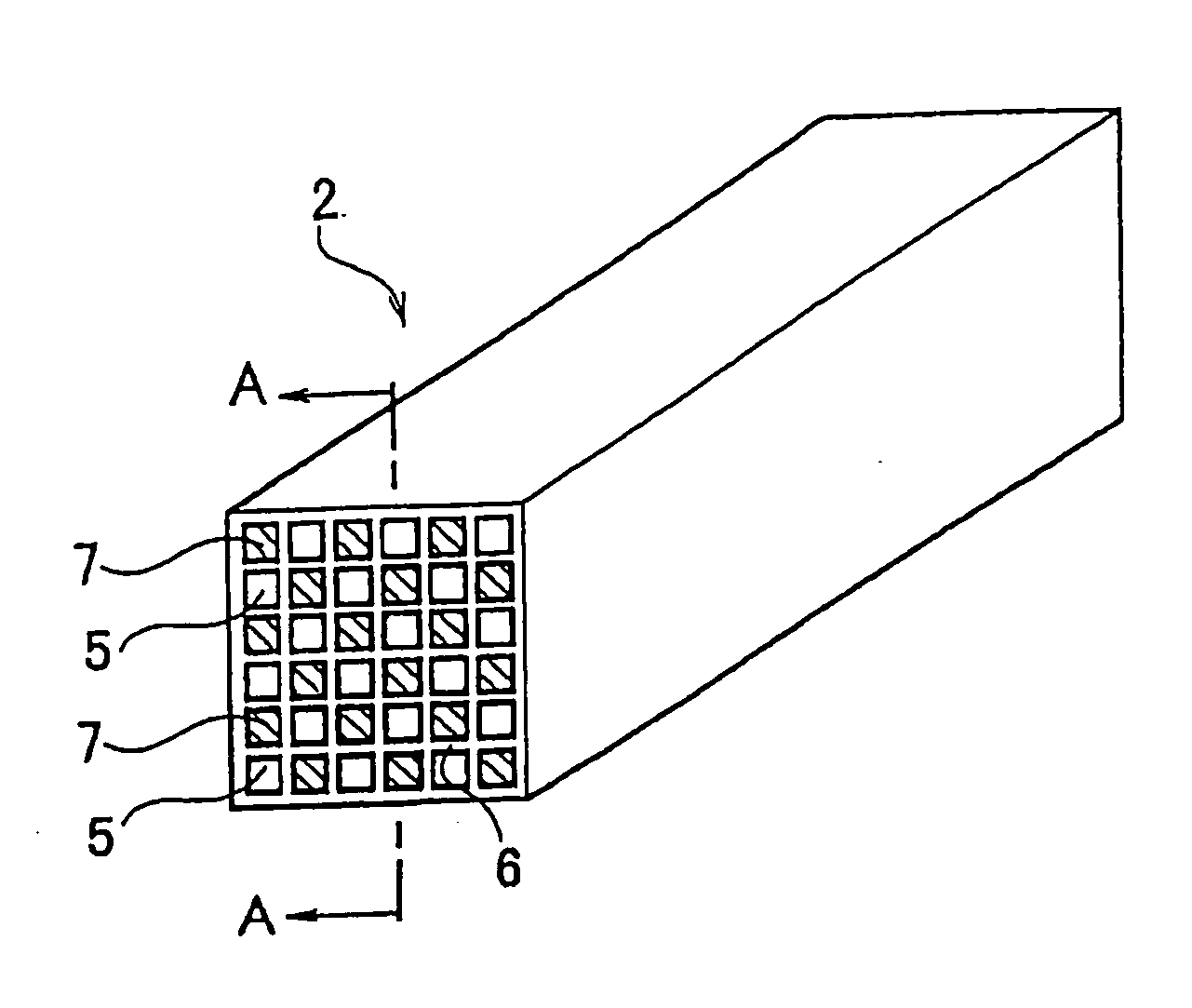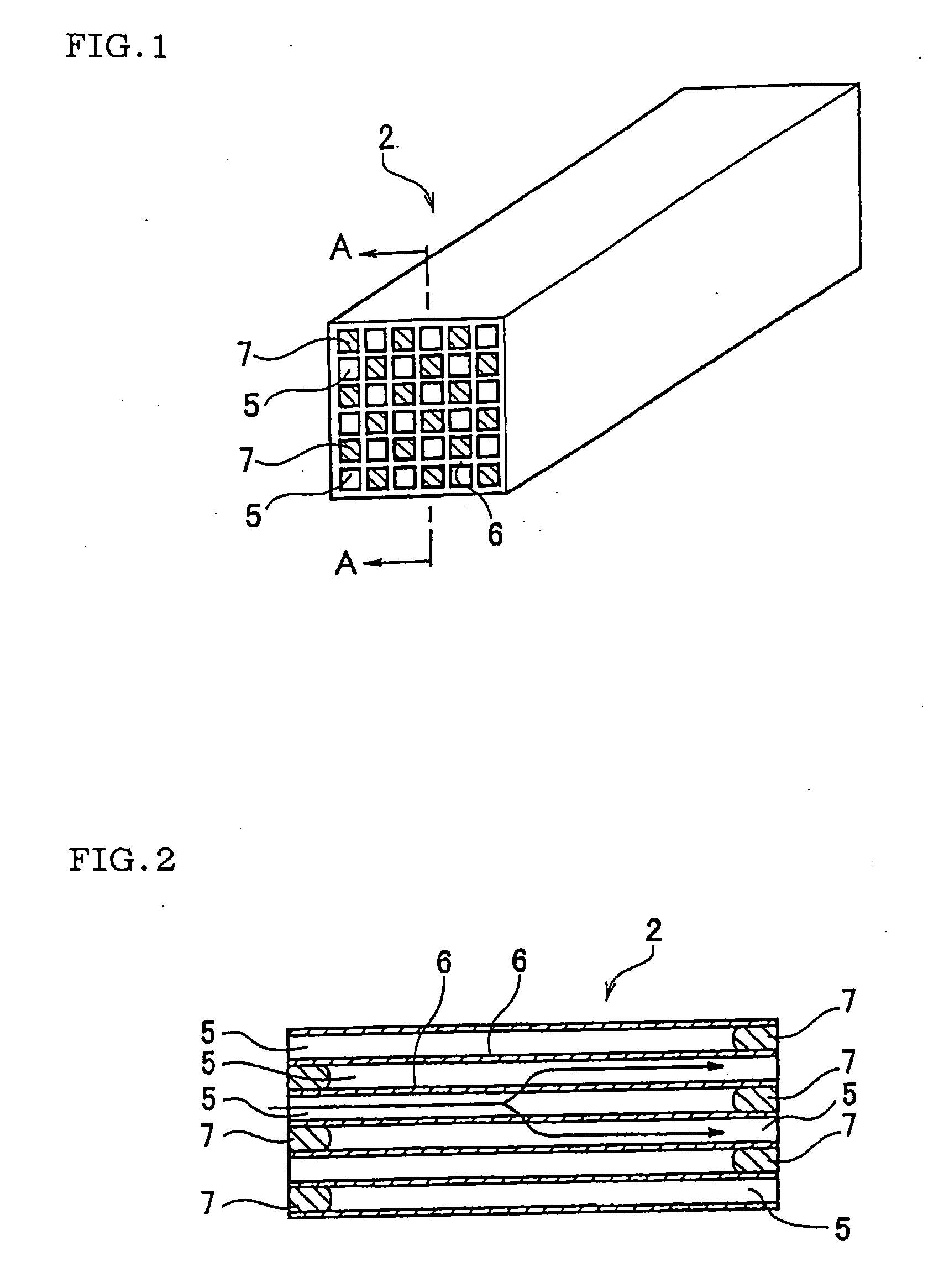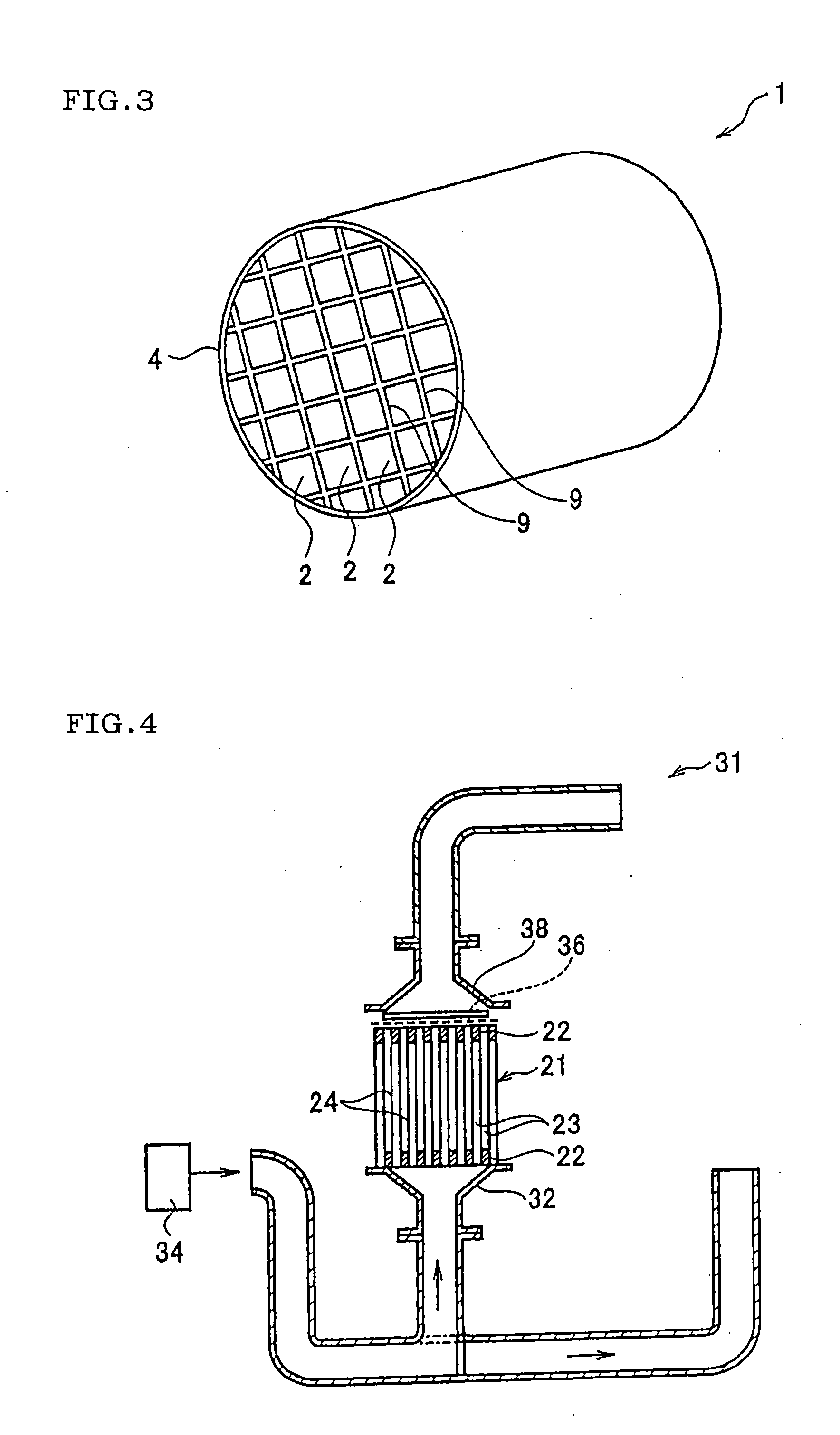Method of manufacturing honeycomb structure
a honeycomb structure and manufacturing method technology, applied in the field of honeycomb structure manufacturing, can solve the problems of excessive temperature gradient, low plasticity of clay, and insufficient honeycomb structure intersections under pressure, so as to reduce the amount of heat to be heated during degreasing, reduce the amount of pressure loss, and improve the effect of yield and dimensional precision
- Summary
- Abstract
- Description
- Claims
- Application Information
AI Technical Summary
Benefits of technology
Problems solved by technology
Method used
Image
Examples
examples
[0079] The present invention will be described hereinafter in more detail in accordance with examples, but the present invention is not limited to any of these examples.
examples 4 to 9
[0085] These examples were similar to Example 1 except that, as shown in Table 4, there were used various water absorption resins (water absorption resins B, D, E, F, G and H) other than the water absorption resin A of Example 1. Moreover, perpendicularity, range and bend of the resultant ceramic formed body were measured, a degree of deformation was evaluated, and there were also evaluated the presence (generation frequency) of defects in segments, the number of cell cuts / the number of the defects, yield due to the cell cuts and porosity. Evaluation results and measurement results are shown in Table 4.
[0086] In Table 4, the water absorption resin B is a resin having a water absorbing magnification of one fold, the water absorption resin D is a resin having a water absorbing magnification of five folds, the water absorption resin E is a resin having a water absorbing magnification of five folds, the water absorption resin F is a resin having a water absorbing magnification of 50 fo...
example 10
[0090] Example 10 was similar to Example 5 except that in addition to a water absorption resin D of Example 5, a mixture of light mineral oil and wax emulsion was mixed as oil. Evaluation results and measurement results are shown in Table 5. In the resultant-honeycomb structure of Example 10, values of perpendicularity, range and bend were reduced, and a dimensional precision was improved while preventing generation of cell cuts.
PUM
| Property | Measurement | Unit |
|---|---|---|
| porosity | aaaaa | aaaaa |
| particle diameter | aaaaa | aaaaa |
| particle diameter | aaaaa | aaaaa |
Abstract
Description
Claims
Application Information
 Login to View More
Login to View More - R&D
- Intellectual Property
- Life Sciences
- Materials
- Tech Scout
- Unparalleled Data Quality
- Higher Quality Content
- 60% Fewer Hallucinations
Browse by: Latest US Patents, China's latest patents, Technical Efficacy Thesaurus, Application Domain, Technology Topic, Popular Technical Reports.
© 2025 PatSnap. All rights reserved.Legal|Privacy policy|Modern Slavery Act Transparency Statement|Sitemap|About US| Contact US: help@patsnap.com



